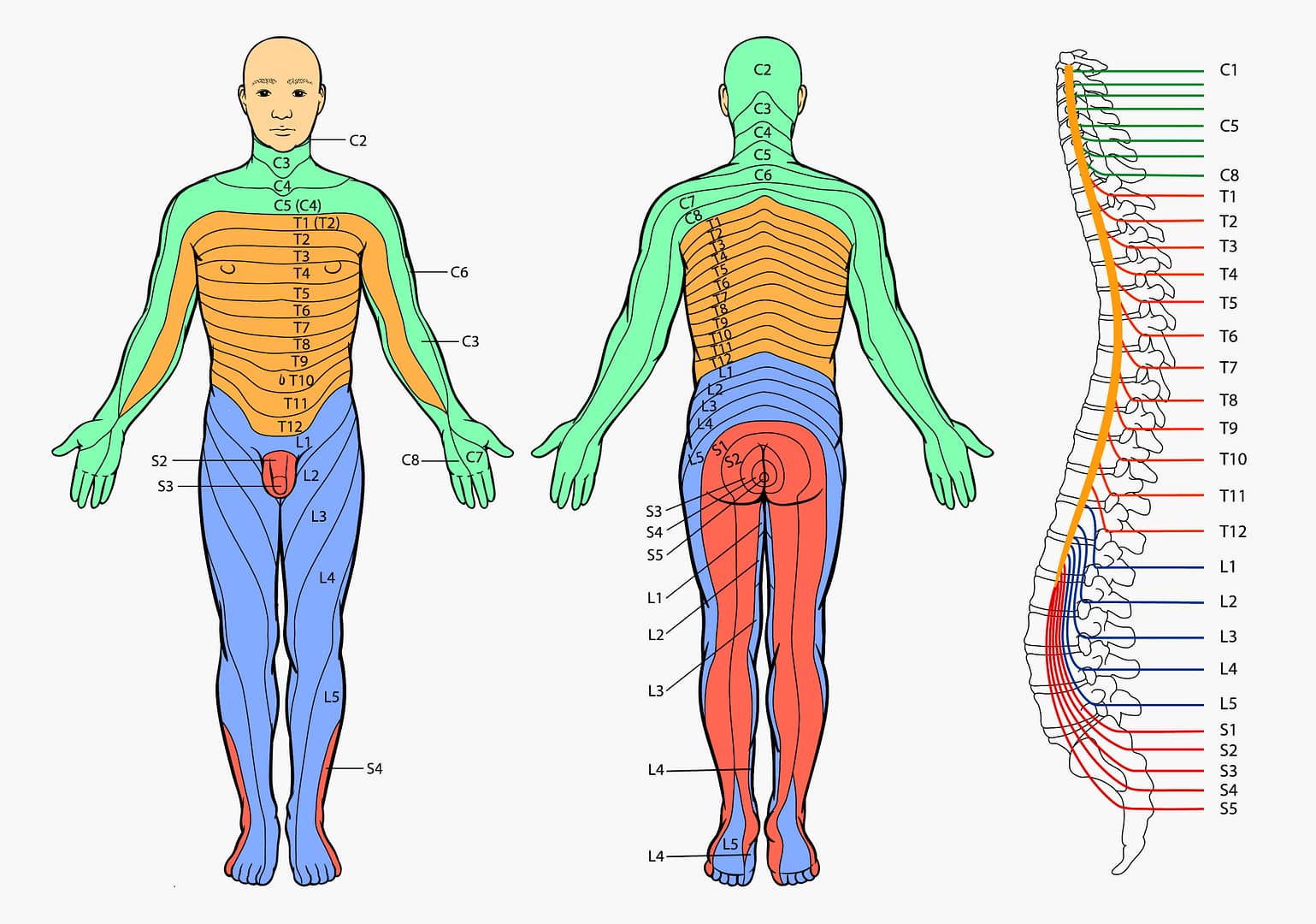What are Dermatomes?
A dermatome is an area of skin in which sensory nerves derive from a single nerve root. These nerves can cause pain within the dermatome area. The body is divided into specific regions called dermatomes. A dermatome refers to the part of the embryonic somite.
The spinal cord is broken up into 31 dermatome segments. Each segment has a pair (left and right) of ventral (frontal) and dorsal (posterior) nerve roots; which relays motor and sensory nerve sensations, including pain. Combined on each side of the body the anterior and posterior nerve roots form the spinal nerves as they exit the vertebral canal through the neuroforamina. The segments are composed of eight cervical, twelve thoracic, five lumbar, five sacral, and one coccygeal. Dermatomes exist for each of the nerve roots. Each specific dermatome transmits sensory information via the sensory nerve fibers to the spinal nerve root of a specific vertebra.
Along the thorax and abdomen, dermatomes are stacked like discs forming a human. The dermatome pattern in the arms and legs is different, running longitudinally along the limbs. Generally dermatome patterns are similar for all people, however precise dermatome areas are as unique to an individual as fingerprints.
Dermatomes are especially important and necessary for assessing and diagnosing the level of spinal cord injury. In some cases the origin of pain can be traced back to a specific dermatome root in the spine. Dermatomes help localize neurologic levels. Symptoms that follow a dermatome, like pain or a rash, may indicate a pathology involving the related nerve root. Viruses, like shingles, which infect the spinal nerves can reveal their origin by showing up as a painful dermatomic area. Shingles migrates along the spinal nerve to affect only the area of skin served by that nerve.
 Skip to content
Skip to content

